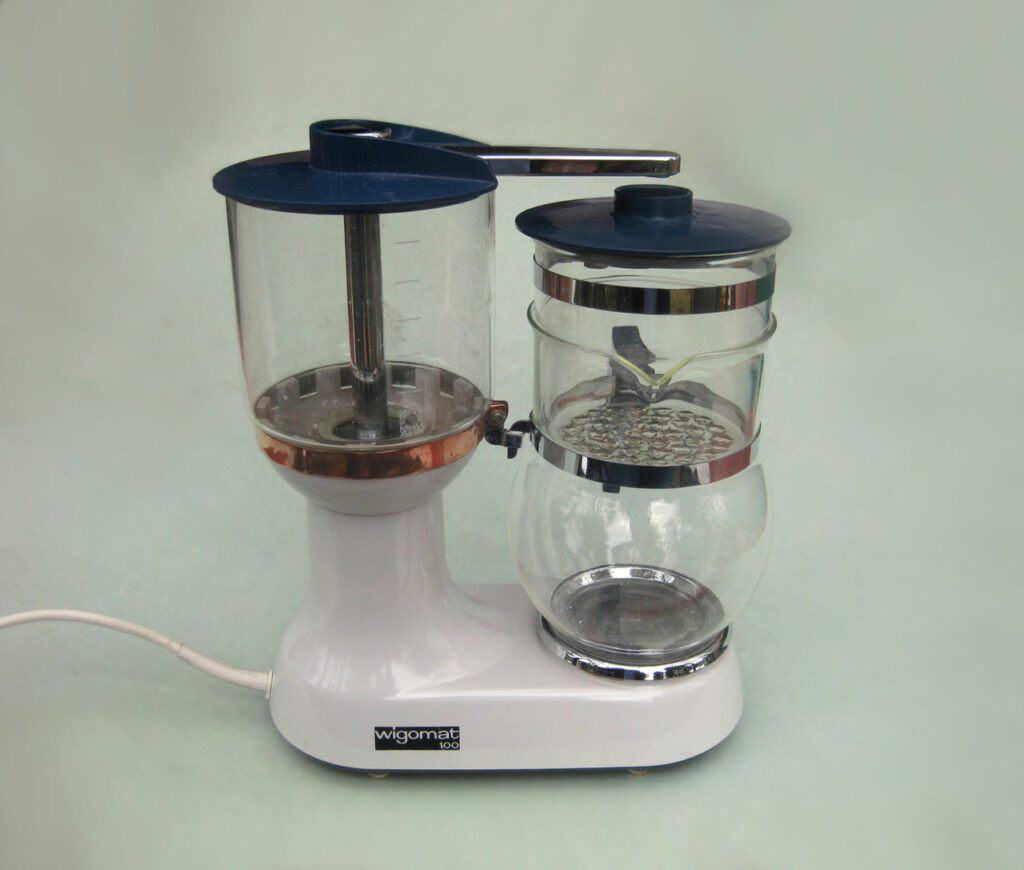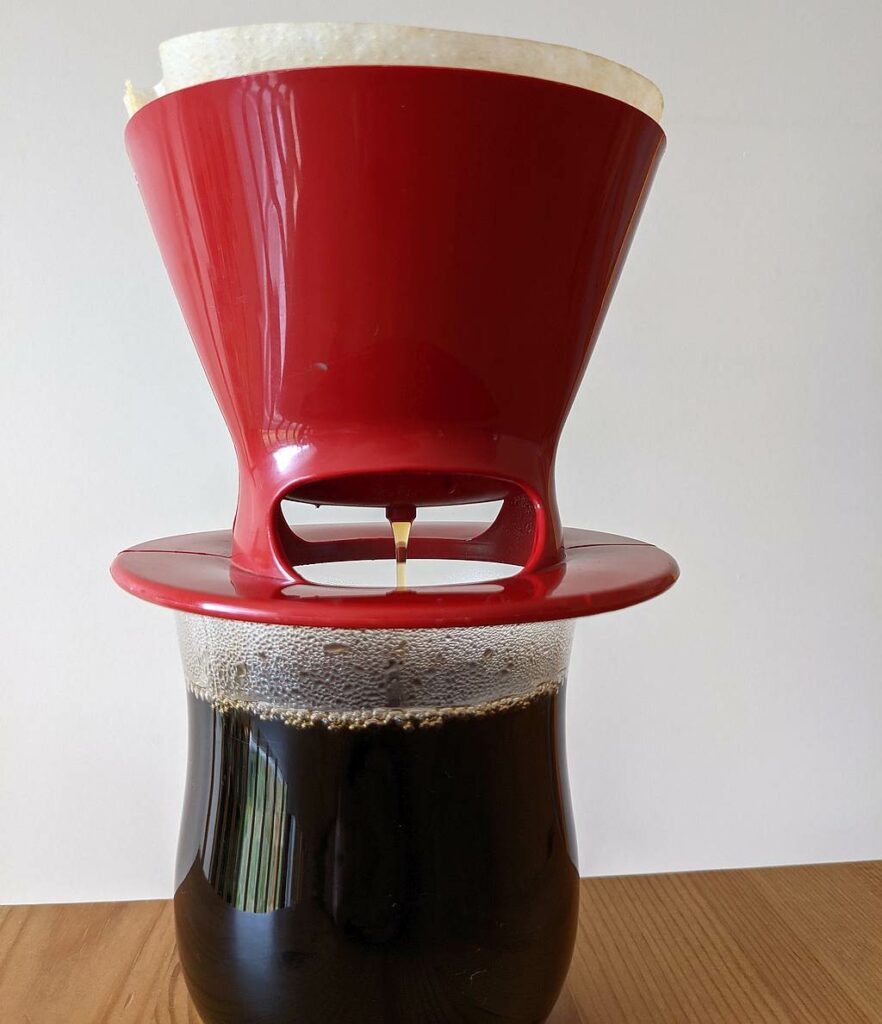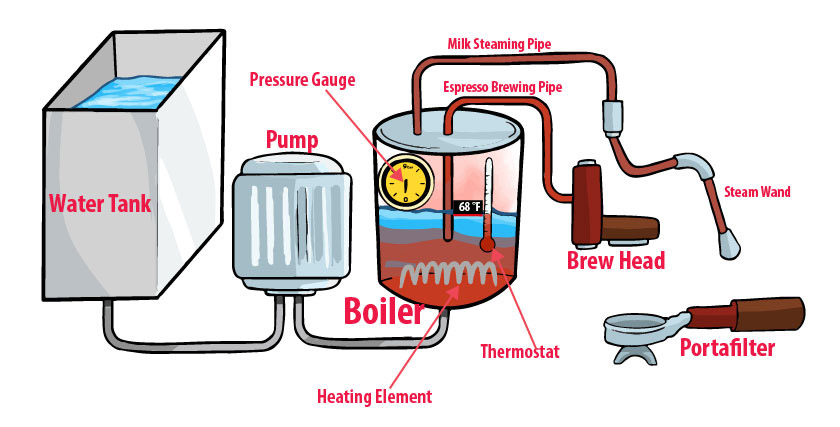I hope you are a drip coffee lover, and you landed on this page from curiosity. Either way, we don’t judge, coffee is very personal. Espresso… What is it about it that makes the connoisseurs turn up their noses to other coffees? In this article, we will show you “What are the differences between drip coffee and espresso”.
The question might sound simple to some, but I promise, there are many aspects worth exploring in order to understand how the two drinks compare.
Maybe you already have a choice, and wanted to understand why you made that choice. Or maybe you are a beginner and want to know what to look for and what to expect from your next beverage. Either way, we show you all of the differences between the two caffeinated beverages.
There is an entire discussion about it in this article “What Makes Espresso Special?”. However, in this post we are going to tackle the subject from a strictly comparison perspective.
What Is the Difference Between Drip Coffee and Espresso?
The main difference between espresso and drip coffee is the added pressure when brewing espresso. The pressure is what changes almost everything else about espresso. But let’s get deeper into the subject, and compare the two coffee brewing methods side by side.
A Bit of History…
Caffeine has likely been consumed by humans since the Stone Age. Evidence suggests that our ancestors chewed on caffeinated plants to benefit from their magical properties. However, coffee as we know it was most likely first invented in the 15th century in Ethiopia and exported to the Yemen.
The First Espresso Machine

Espresso came along a little later. There are some sources that suggest espresso may have been invented as early as the 16th century. However, the first official espresso machine wasn’t patented until 1884 in Turin, and was invented by a man called Angelo Moriondo. It is said that Moriondo wanted to speed up the process of coffee preparation, and found a way to do so using pressure. The word ‘espresso’ therefore, has its origins in the words ‘pressure’ and ‘express’.
Drip Coffee Invention
Filters for drip coffee were actually invented at around the same time in 1908 by a German called Melitta Bentz. The first electric drip coffee maker wasn’t invented, unbelievably, until the 50’s and electric drip coffee machines became the home standard in the 70s.

Ingredient List Comparison
There is a common misconception that espresso contains special ingredients. In fact, the ingredients in drip coffee and espresso are exactly the same: hot water and coffee beans. The difference is in the preparation method, and the recipe, but we’ll cover that in a minute.
Espresso doesn’t need special beans, or special roast. The “espresso roast” is just a term used for marketing purposes. Any high-quality roasted coffee beans are fine for espresso, but it all depends on your taste. Espresso is not a specific roast type, Espresso can be made with any roast – light, medium, or dark. The choice of roast is more about personal preference than a hard and fast rule.
Water, the second ingredient, plays a crucial role in the brewing process. Whether you’re making drip coffee or espresso, using good quality filtered or spring water will significantly improve the taste of your coffee.
Milk, sugar, and flavorings are optional additions, that don count in this comparison. However, they can transform your coffee experience, especially in espresso-based drinks like lattes and cappuccinos. Speaking about adding textured milk to your coffee, there is a difference here, and we’ll discuss it in a separate section.
Brewing Method – Preparation Differences
I briefly mentioned that the brewing method is what determines all of the differences between drip coffee and espresso, and ultimately, how your cup of coffee tastes. Here is a brief intro into the technical aspect of the two caffeinated beverages.
Drip Coffee – Is a Gravity Brewing Method
Drip coffee brewing methods rely on gravity for extraction. Water is poured over the coffee grounds, dissolving the caffeine, sugars, and other soluble solids. The solution then, (your cup of joe), is passed through a filter that retains the coffee grounds, allowing only the final drink to go into your carafe, or cup.

The beauty of drip coffee is its simplicity. All you need is a filter and ground coffee. It is a bit more complicated than that. The filter and the coffee grounds have to be calibrated perfectly so that the hot water is in contact with the ground coffee beans for the correct amount of time. But you’ll see in a second that compared to espresso, filter coffee is so much simpler.
Espresso – Is a Pressure Brewing Method
On the other hand, espresso is a pressure brewing method. It uses an espresso machine, a specialized equipment, capable of creating 9 bars of pressure, pushes hot water through a puck of compressed coffee grounds. The 9 bar pressure dissolves the caffeine, sugars, and other soluble solids, and mixes some air bubbles into the drink. The added pressure emulsifies the air bubbles, coffee oils, and some fines coffee particles into the drink. Then the coffee solution, (your espresso shot), is passed through a filter which retains the coffee grounds. The result is a rich and concentrated coffee shot.
The brewing method is what makes the two drinks so different. Some will say that the recipe contributes, but in the end the brewing method dictates the recipe. It takes a bit of reading to understand this, but here is how I would say it in a few words.
The brewing method is a recipe as well. You have a strict set of brewing variable that can only vary very little. For instance, grind size is fine for espresso, you can’t really change that. The filter basket size dictates the dose. And the pressure is constant. If you don’t nail the perfect grind size for espresso, you will not get the exact pressure that is needed in the portafilter.
In the end the most important factor, that determines everything else, is the pressure.
Equipment
Espresso equipment is among the most expensive among all brewing methods. The espresso coffee makers are complex machines that need to heat water and pump that water under pressure. The standard barista equipment also includes a good coffee grinder, and a tamper at a minimum. This can get expensive. A super-automatic espresso machine removes the need of the tamper and grinder, but is more expensive than the average semi automatic.
The drip coffee equipment can be very inexpensive, especially for manual brewing. We recommend spending a bit on a good coffee dripper, but you would probably be okay even with a plastic one. You still need a decent coffee grinder, but the overall budget is smaller.
Other Brewing Factors Compared
I know I just said that the brewing method is the determining factor, but it also important to know how that that influences other variables and what to expect.
Several factors contribute to the distinct characteristics of drip coffee and espresso. These include the grind size, water volume, the amount of ground coffee per serving, extraction time, and water temperature. Each of these factors plays a role in creating a cup of coffee with unique attributes such as body, (mouthfeel), clarity, strength, and flavor profile.
Grind Size
- Espresso – The grind size for espresso is finer than the grind size for drip coffee. The fine grind creates resistance in the coffee puck during the brewing process. The resistance in the puck is what creates the brew pressure.
- Drip Coffee – The grind size for drip coffee is a medium. If we grind too fine, we create resistance in the coffee bed, so water will pool on top of the brew bed. The finer you grind, the slower the flow of water during the brewing process. Medium grind size ensures a 3 to 5 minutes contact time between the coffee grounds and the water.
Water Volume
- Espresso – Espresso is brewed concentrated. The classic amount of water used for espresso is one fluid ounce for a single shot, or two ounces for a double shot.
- Drip Coffee – The amount of water used for standard serving of a drip coffee is six to eight ounces.
Dose – Ground Coffee per Serving
- Espresso – The amount of ground coffee used for espresso is usually one tablespoon or less.
- Drip Coffee – The amount of ground coffee used for drip coffee is usually two tablespoons or more.
Brew Time
Brew time, or extraction time, is also an important factor for both espresso and drip coffee. In general, the brew time for espresso is much shorter than the brew time for drip coffee.
- Espresso – 20 – 30 seconds
- Filter coffee – 4-5 minutes
Brew Temperature
- Espresso – should be brewed with water that is between 195°F to 205°F,
- Drip coffee – should be brewed with water that is between 195°F to 212°F.
Organoleptic Properties – How Does It Look and Tastes?
From an organoleptic perspective, drip coffee and espresso offer unique sensory experiences. They are different drinks, and most times drip coffee lovers don’t like espresso, and vice versa.
Serving size
Espresso is a small drink, usually served as a double shot, with a volume of approximately two ounces. Drip coffee, on the other hand, is a larger cup, typically around five ounces, although North American coffee shops offer it in eight ounce cups and larger sizes.
Color
The color of a drink is determined by its TDS. A higher TDS results in a darker drink, such as black espresso, while drip coffee can be a lighter color. So much so that drip coffee is preferred as a clearer drink. This is more important from a flavor perspective, but we’ll get to that in a moment.
Flavor
When drip coffee is clear, all of the origin notes will be emphasized, and drip coffee coffee brightness is something that can’t be replicated with espresso. Espresso, on the other hand, is a strong cup, and its thickness and the amount of coffee oils in the beverage, mutes the origin notes.
The thickness of the espresso, combined with the high concentration of coffee oils and suspended coffee microparticles, (baristas call these fines), gives it a unique mouthfeel. Espresso coats the tongue and the unique composition extends the lingering taste long after the drink was consumed.
However, espresso falls short when the coffee lover wants clear origin notes in their coffee cup. An espresso drink is rather strong, but it’s not particularly distinctive.
The tasting notes in a classic espresso tend to be darker, nuttier and more chocolaty (in coffee terms). Lots of espressos will have a more bitter taste than drip coffee. This is due to badly prepared coffee though more than an actual quality of the espresso. Well prepared espresso should be sweet to taste.
It is important to note that much of the flavor will be determined by the roast and the coffee bean selection, and we showed that this is a personal preference more than a preparation restriction.
Visual Aspects
Espresso, often served as a double shot, is a concentrated, almost viscous drink with a high percentage of total dissolved solids (TDS), giving it a dark color and robust flavor. Drip coffee, on the other hand, is a larger, clearer beverage with a lower TDS.
One of the defining features of espresso is the crema – a foamy layer on top of the shot that holds unique flavors and aromas not found in drip coffee. While crema is not a critical aspect, it is a sign of a good preparation, most of the times.
Caffeine Content – The Big Surprise
Contrary to popular belief, drip coffee contains more caffeine per serving than a shot of espresso.
An 8 oz cup of drip coffee typically contains about 120 milligrams of caffeine. Compare that with a double shot espresso, which hold about 80 milligrams of caffeine.
So next time you need a boost, reach for the drip coffee mug, and the the espresso shot. Yes, an espresso has a much higher caffeine concentration. Those 80 mg of caffeine are in a short 2 fluid ounce beverage. But if caffeine is what you are looking for, who says you can’t drink a second cup, whatever your preference is.
People get jitters from espresso. The reason is because they drink it too fast. When you chug your coffee, you drink the entire amount of caffeine at once. Your body doesn’t have the time to process that so fast.
Would you chug an 8 ounce cup of coffee? And if you do, do you think that you will get jitters? So when you drink your next cup of coffee, be it espresso, or drip coffee, think about the concentration of caffeine, rather than the amount of coffee.
Cleaning and Maintenance
While some of the cleaning aspects are the same, espresso machines are much more complex, and require extra steps for cleaning and maintenance. We have a guide for cleaning drip coffee makers, if you need a refresher, but in general, a drip coffee maker is much more simpler to maintain and clean.
Conclusion
As a coffee lover who appreciates all brewing methods, I can say that whether you prefer drip coffee or espresso, the journey of exploring coffee is as rewarding as the destination. So, here’s to a world of rich flavors, aromatic beans, and the joy of finding your perfect cup of coffee.
We are partial to drip coffee here, on this website. However, to each their own, and we don’t judge.

